Don't wanna be here? Send us removal request.
Note
i love you aroallo people i love you pan people i love you bi people i love you nonbinary people i love you lesbians i love you trans women i love you intersex people i love you everyone in every body or identity with discourse surrounding if you should exist or not i love you so much i love you i love you i love you. you are so so loved i promise you
a very tired but hopeful trans lesbian 🙏
String identified: aa a a a ta t tt t c g t t c . a
a t t ta a 🙏
Closest match: Sepioteuthis lessoniana genome assembly, chromosome: 33 Common name: Bigfin Reef Squid
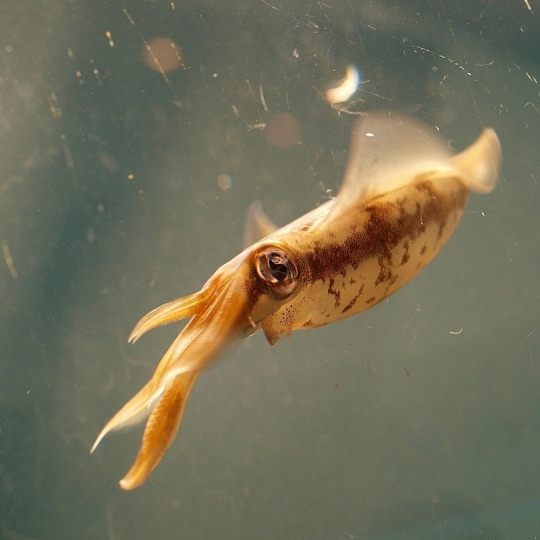
11K notes
·
View notes
Note
If you haven't done it already, I would like to submit the clever cuttlefish~
Animal of the day: Cuttlefish!
Cuttlefish are marine molluscs of the order Sepiida! They are cephalopods, like squid, octopuses, and nautiluses. They have a unique internal shell called the cuttlebone which is used to control their bouyancy.
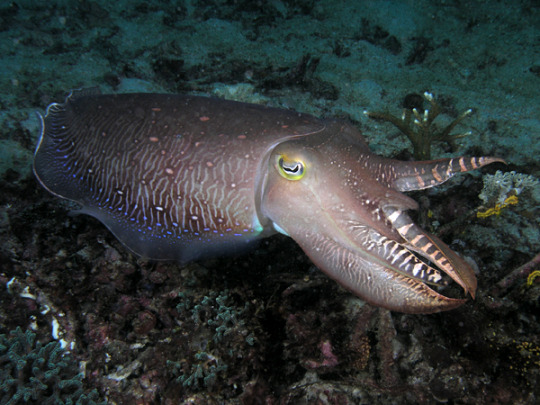
Cuttlefish are masters of disguise and can camouflage incredibly well by changing their skin colour! They can display as many as 12 to 14 patterns, changing colours within a second.
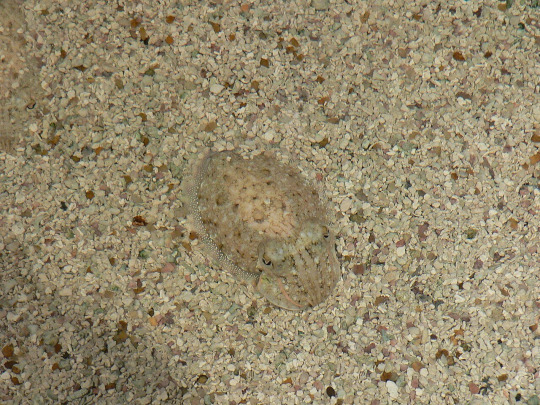
Here is a juvenile cuttlefish camouflaging itself against some sand! Research into biological colour changing, such as that of the cuttlefish, has led to advancements in engineering, such as artificial chromatophores. These could eventually be used in clothing to provide better camouflage for humans!

30 notes
·
View notes
Text
Ammonites are an extinct subclass of cephalopods that lived from the Devonian period to until the Cretaceous-Paleogene extinction event. They had external shells in a variety of different shapes, from Nautilus-like planispirals, to long cone like heteromorphic shells.

A cool example of an ammonite shell

Doodlin
#cephalopod#cephalopods#marine biology#biology facts#ammonite#marine life#fossils#Ammonites are one of my fav types of cephalopods#I love them so much
989 notes
·
View notes
Text
The bigfin squid (Magnapinna) are a bizarre looking genus of squid, and the only genus who reside in the Hadal zone (6km to 11km/ 20 000 ft to 36 000ft under the sea).
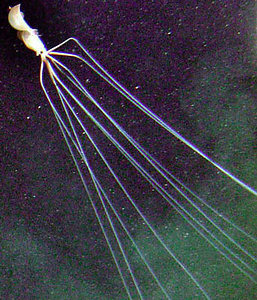
#cephalopod#cephalopods#marine biology#squid#marine life#biology facts#Ngl this looks like some Junji Ito creature#cephalopod fact
6 notes
·
View notes
Text
The Smithsonian National Museum of Natural History has 2 giant squid (Architeuthis dux) specimens.

A Male ^
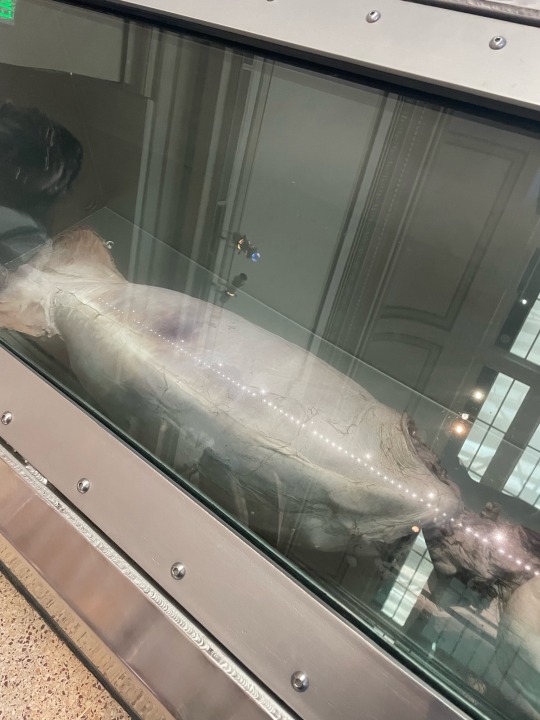
And a female ^ (This specimen is laying horizontally across the hall in museum, stretched out)
#cephalopod#cephalopods#marine biology#squidtember#squid#marine life#biology facts#sorry the about the quality of the pictures#its really cool and completely free to get into the museum
99 notes
·
View notes
Text
Cepho fact #10
The colossal squid (Mesonychoteuthis hamiltoni) is the biggest known invertebrate in the world, and has the largest eyes of any known creature.

Colossal squid specimen from the Museum of New Zealand.
This massive size is an example of abyssal gigantism, also called deep sea gigantism, which is a tendancy for deep sea species to grow much larger than their shallow sea counterparts. One of the reasons for this is that, unlike terrestrial organisms, aquatic organisms can be large without gravity effecting their ability to move in the same way it does on land.
4 notes
·
View notes
Text
Cepho fact #09
Using jet-propulsion some squids in the Ommastrephidae family are able to launch themselves out of the water. By a combination of this jet-propulsion and spreading their arms and fins they are able to glide for long distances.
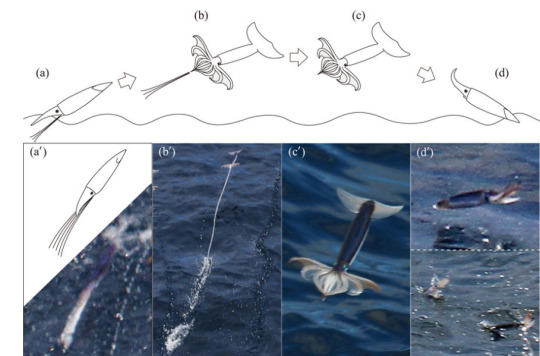
This diagram shows the steps taken in order for these squid to "fly". Launching: (a , a') The squid breaks the surface using jet propulsion, and pull in their arms and fins. Jetting: (b , b') The squid spread their arms and fins and keep jetting until their mantle is exhausted. Gliding: (c , c') The squid keeps their arms and fins spread as they glide through the air. Diving: (d , d') The squid pulls in their arms and fins as the re-enter the water.
44 notes
·
View notes
Text
Cepho fact #08
There are 2 main divisions of octopi; Cirrate octopus have 2 fins on their heads and have small hair like strands on their single row of suckers called cirri, Cirrate octopus also lack ink sacks and are deep sea dwelling.

You can see the fins on this dumbo octopus (Grimpoteuthis)
Incirrate octopus are the "stereotypical" octopus, they lack cirri on their suckers, and lack the fins on their head, but have ink sacks.

And you can see the lack of head fins on this Blue ringed octopus (Hapalochlaena)
152 notes
·
View notes
Text
Cepho fact #07
The word cephalopod originates from the Ancient Greek words κεφαλή (kephalē, head) and ποδός (podós, feet). Cephalopods were named "head-feet" in reference to the simple looking body of a head connecting to their arms.
10 notes
·
View notes
Text
Cepho fact #06
Although octopi (octopuses?) are normally solitary animals, there are a few examples of them grouping together and demonstrating complex social behaviours such as "Evicting members from their dens, and excluding individuals from the site."
If you are interested in this sort of thing I'd highly recommend reading Other Minds: The Octopus, The Sea, And The Deep Origins Of Consciousness by Peter Godfrey-Smith.
6 notes
·
View notes
Text
Cepho fact #05
Cephalopods are the only class of molluscs who have a closed circulatory system, aka their blood is kept within blood vessels.
11 notes
·
View notes
Text
Cepho fact #04
The common octopus has about 500 million neurons, but interestingly, about two thirds of those are found in their arms. This gives their arms somewhat of a mind of their own.
3 notes
·
View notes
Text
Cepho fact #03
Cephalopods (class Cephalopoda) can be subcategorized into 3 subclasses; Nautiloidea (Nautilus), Coleoidea (which contains all shell-less cephalopods), and the extinct Ammonoidea (Ammonites).
http://eprints.cmfri.org.in/10414/1/09_V._Venkatesan1.pdf
3 notes
·
View notes
Text
Cepho fact #02
The vampire squid (Vampyroteuthis infernalis, aka "Vampire squid from hell") is actually more closely related to octopi than it is to squid.
3 notes
·
View notes
Text
Cepho fact #01
Cephalopods use small organs called Chromatophores to change colours. Chromatophores contain small sacs of pigments, when the muscles surrounding the chromatophores stretch, they cause the pigment to expand under the skin and make the colour visible.
3 notes
·
View notes